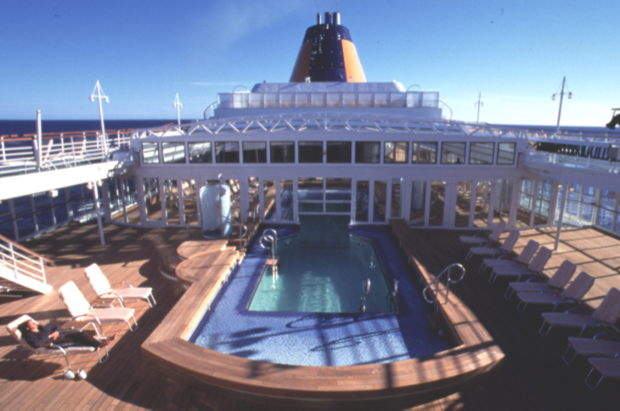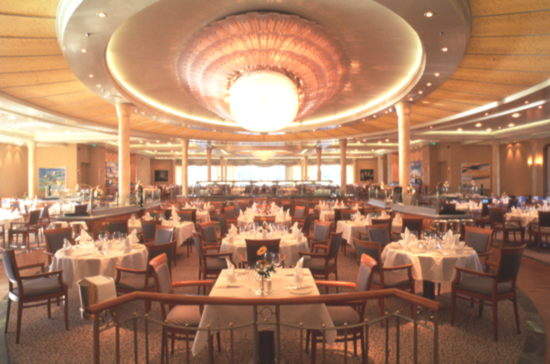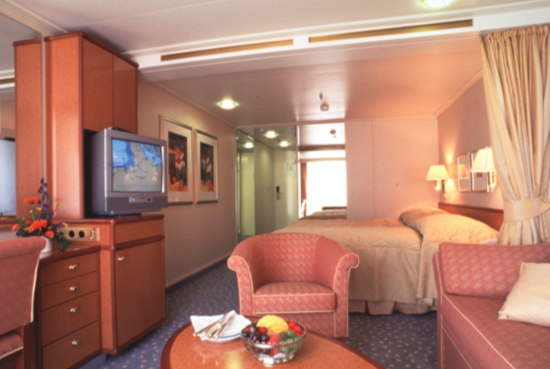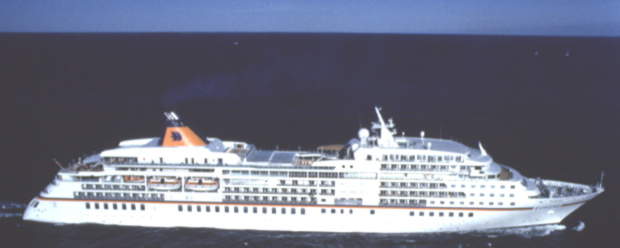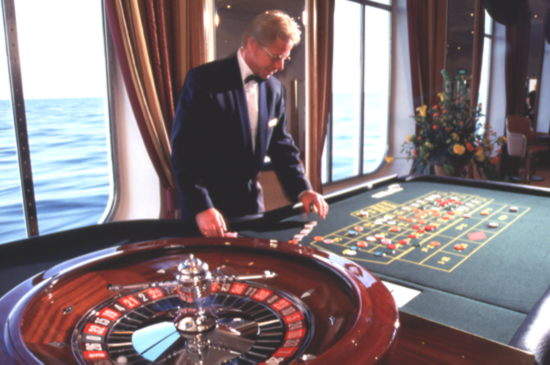Europa marked her entry into the selective cruise market with an inaugural voyage in September 1999 followed by a 160-day round the world millennium voyage starting Lisbon in November 1999.
She has already been delivered to her owner, the German shipping group Hapag-Lloyd and will spend the intervening time in final fitting out and crew training. The style and ambience of the new Europa is intended to echo her predecessors which bore the same name.
She is the sixth Europa to join the Hapag-Lloyd cruise fleet and will replace the previous 37,012gt Europa, now sold to Malaysia’s Star Cruises but chartered back until July 2000 to Hapag Lloyd.
Cruise ship design
Europa was built at Kvaerner Masa yards in Finland to meet the standards of German classification society Germanischer Lloyd. Her keel was laid in November 1998 and she was floated out of her drydock in February 1999.
She has been specifically design for the German market, marketing herself as a German-language ship, and has a series of classic voyages planned during the next two years.
The company says her design and operation is a completely new concept and incorporates key features required by highly demanding, experienced cruise passengers. There are plenty of balconies and a layout orientated towards ensuring passengers do not have to walk too far.
The ship will be 198.1m-long and 24m-wide, yet will carry only 408 passengers, less than a quarter of the numbers transported by some of the big names in the industry. As a result, her passenger/space gross tonnage ratio is 70.1gt, as against 61.5gt on her predecessor and 36.1gt on her current German market rival Deutschland.
In essence this means she has more passenger space than any other major cruise vessel. Accordingly, she is not as well geared to the rapidly expanding family-based, young people’s market.
Facilities
Passenger accommodation is offered across seven decks and laid out very spaciously. Each cabin has 27m² of space and a ceiling height of 4.5m – dimensions previously unheard of on passenger ships. To add to Europa‘s elegance bathrooms in each cabin boast granite floors and marble floors. The 12 penthouse suites take luxury one step further, providing either 45m² or 60m² of floor space each served by their own butlers.
Situated amidships is the atrium which has glass lifts servicing all seven passenger decks. Public areas include three restaurants, four bars, three lounges, a café, casino, shopping centre and three swimming pools, the main pool being semi-enclosed on the top deck.
Interior design has been undertaken by Oslo-based Yran & Storbraaten.
Vessel propulsion
Europa’s propulsion comes from four MAN B&W diesel engines developing a total power output of 21,606kW (29,376bhp) and two ABB Azipod motors to assist manoeuvring in tight space. Her top cruising speed is 21 knots.


